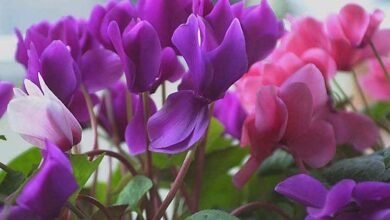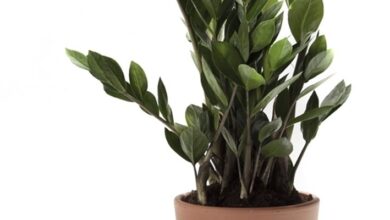Pests and diseases of the artichoke

The cultivation of the artichoke is relatively simple and easy to carry out for a beginning gardener, however, it may happen that it begins to show some health problems if we exceed the time of its cultivation. Ideally, allow between 4 and 5 years to pass before planting artichokes in the same place to prevent diseases in the soil, since the artichoke depletes the land in which it is grown.
In Friends of Gardening we will explain everything you need to know about pests and diseases of the artichoke :

Diseases that affect the artichoke leaf
Compound mildew
This disease is also known as «white» or «downy mildew» and is caused by the appearance of the fungus Bremia lactuacae . At the beginning we can see white and brown spots on the leaves and eventually we will begin to see a «hair» or whitish veil on the underside of the leaves.
This fungus does especially well in humid environments, although a simple shower may be enough to start reproducing. The development of this disease is very fast, so we will have to treat it as soon as possible, using a natural fungicide .
Artichoke pox
Artichoke pox, Ramularia cynarae Sacc. , is also known as «leaf disease» and it is precisely on the leaves that the appearance of black spots begins to be observed , which eventually end up covering the entire surface of the leaf and drying it out.
Let’s not forget that the spots can also be grayish in color, yes, they will always be angular. To treat this problem, the affected leaves must be cut and burned , although sometimes it is necessary to go further and also burn the feet of the plant. That will depend on whether the disease has advanced a lot or a little. In the mildest cases we can treat it directly with a natural fungicide , as in the previous case.

Diseases of the artichoke chapters
Black spot
This disease is caused by the Ascochyta hortorum fungus and is usually a disease that affects plants affected by Mildew , one of the diseases that we have mentioned above. You can see some translucent spots , which later turn black, at the end of the bracts, the leaves and finally the stem. This fungus tends to thrive in mild, humid climates and must be treated with natural fungicides .
Botrytis or gray mold
Gray mold does not only affect artichokes, the fungus Botrytis cinerea affects a large number of vegetables and fruits. It manifests itself with excess humidity, especially that accumulated by irrigation or dew hours, causing a fluffy-cottony layer of gray color with very characteristic black spots . At first it develops at the base of the bracts, turning them brown and soft. The ideal in this case is to treat with high spectrum fungicides .
Fat or rot of inflorescences
This disease is caused by the bacterium Xanthomonas cynarae and is usually characterized by the appearance of yellow, translucent and greasy spots on the bracts, which will later lead to rot of the head if not treated. This bacterium usually appears when there are wounds or a detachment of the epidermis (after a hail storm, for example). As there is no specific treatment against this bacterium, the best thing to do is cut and burn the affected chapters from the onset of the first symptoms.
Powdery mildew and powdery mildew
The powdery mildew is caused by the taurica Leveillula of a serious nature, which starts causing white hair and affects the drying of leaves. The oidiopsis is caused by Erysishae chicoracearum and also causes drying of the plant. Both pathogenic fungi should be treated with fungicides in spring and summer.
Parasites and other artichoke diseases
- Artichoke borer : these are the larvae of a species of butterfly ( Hydroecia xanthenes Germ. ), Which nibble on the plant creating small galleries in the stems. It should be treated with biological insecticides and manual work, removing the affected stems.
- Artichoke apion : in this we talk about larvae of the species Apion carduorum Kirb , which feed on the leaves of the artichoke. They will also be treated with insecticides.
- Cassidia of the artichoke : these are insects of the Cassida defflorata Suffr species . We can identify it by the appearance of spiny larvae that devour the epidermis of the leaves. We will also treat it with a natural insecticide.
- Artichoke fly: the fly of the species Agromyza apfelbecki Strobl. It is a very common artichoke parasite and creates small galleries in the leaves, weakening the plant.
- Artichoke fleas : these insects of the species Sphaeroderma rubidum Graells . whose larvae feed on the leaves of the artichoke. They are treated with natural insecticides.
- Snails and slugs : they are voracious leaf eaters, so it is highly recommended to start eliminating snails and slugs without chemicals as soon as possible .
- Aphids : the appearance of these annoying parasites, which end up becoming a real pest for the artichoke, causes curling of the leaves and yellowing. They can be easily removed with a mixture of water (90%) and soap (10%) that we will apply weekly until eliminated.
- Mites : Mites are difficult to see at first glance but can be detected by bulging of the leaves, spots, and yellowing. They can be treated with a natural insecticide based on nettle or with onion and garlic macerated water, which must be sprayed over the stems and leaves.
- Gray worms : the appearance of worms of the species Agriotis ssp. It is very worrying since the larvae of this insect devour the neck of the plant, causing its wilting and subsequent death. In this case we can use specific baits for worms, but we can also spray the stem with insecticides.
- Black donut – it is also a species of butterfly, the larva of which voraciously ingests the leaves, it is treated with natural insecticides.
- Brown Rhizoctonia : The Rhizoctonia solani fungus is present in the soil and causes easily identifiable hollow brown or reddish lesions. They usually appear in summer and require a specific fungicide.
- Esclerotiniosis : the Sclerotinia sclerotirum causes rot accompanied with white hair on the surface of the roots. This fungus usually appears in humid moments.
- Phytophora : Phytophora megasperm causes glassy spots, browning tissues and softening the plant, it also appears in wet times.
- Bacterial white rot : this opportunistic parasite of the artichoke called Erwinia cartovora affects very damaged plants, by ice for example, or when the roots are diseased, melting the tissues. We must pay attention to this problem after winter, especially if it has been mild and wet.

5 tips to prevent artichoke diseases
- Regularly check the stem, both sides of the leaves and the heads of artichokes, especially if the environment is humid and slightly temperate.
- Do not use artichoke residues to make your own natural compost as it is a source of fungi, bacteria, viruses and insects.
- Let the soil rest after growing the artichoke in the garden soil for 4-5 years, as it is a plant that tends to deplete the soil. If you want to continue growing it, bet on planting in pots or crop rotation , as well as the use of new soil rich in nutrients in the last area used to combat the exhaustion caused by the artichoke.
- In winter it is advisable to mulch the artichokes with a thick layer of straw or to hilling by removing the soil, in this way we will be protecting it against cold . However, be careful with humidity, as it is the main cause of the appearance of fungi or rot, in which case it is best to air the straw and change it for another one again.
- Pay attention to the soil of the artichoke to detect any problems related to waterlogging since the artichoke needs a well-drained soil . It will also be useful to pay it if necessary.






